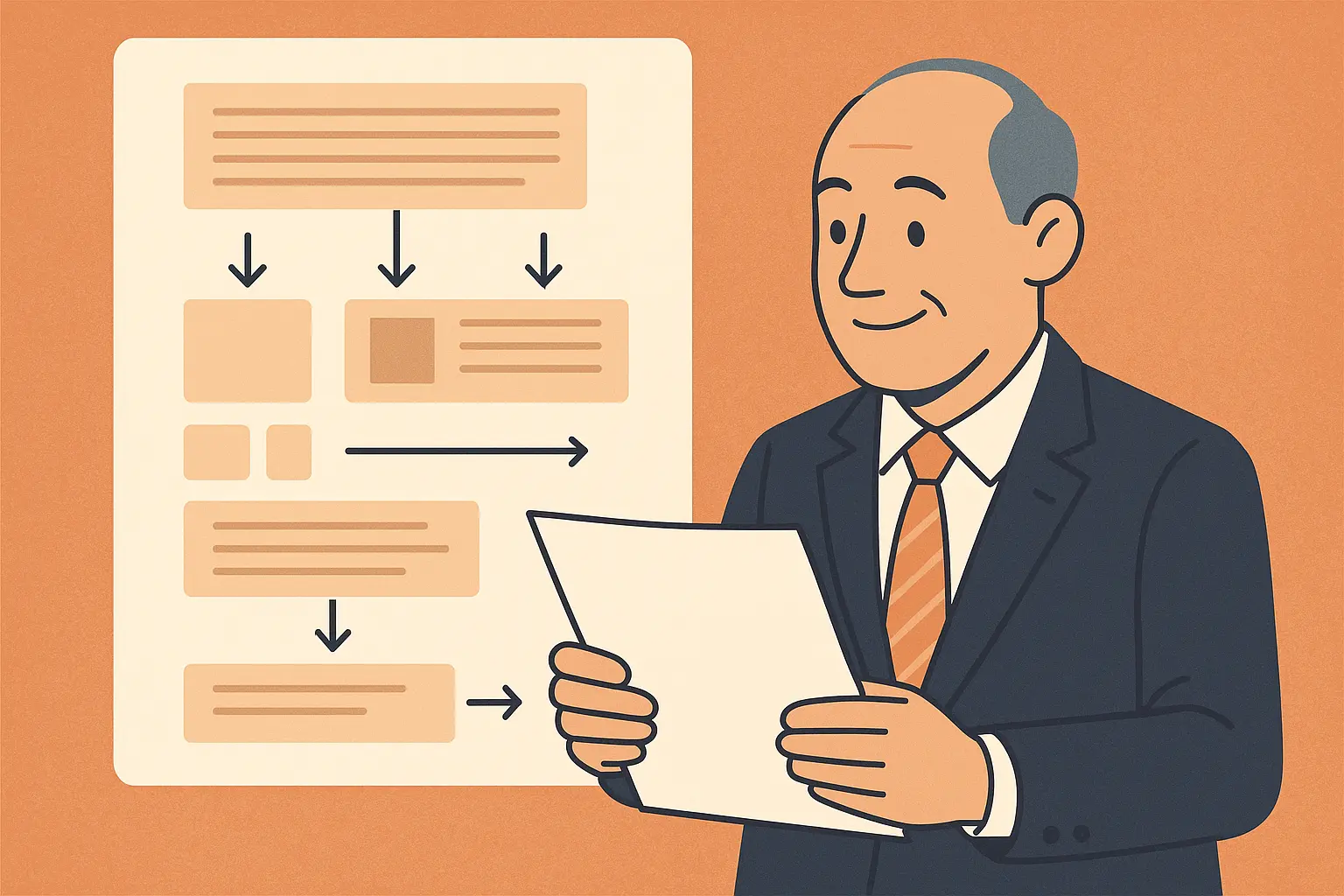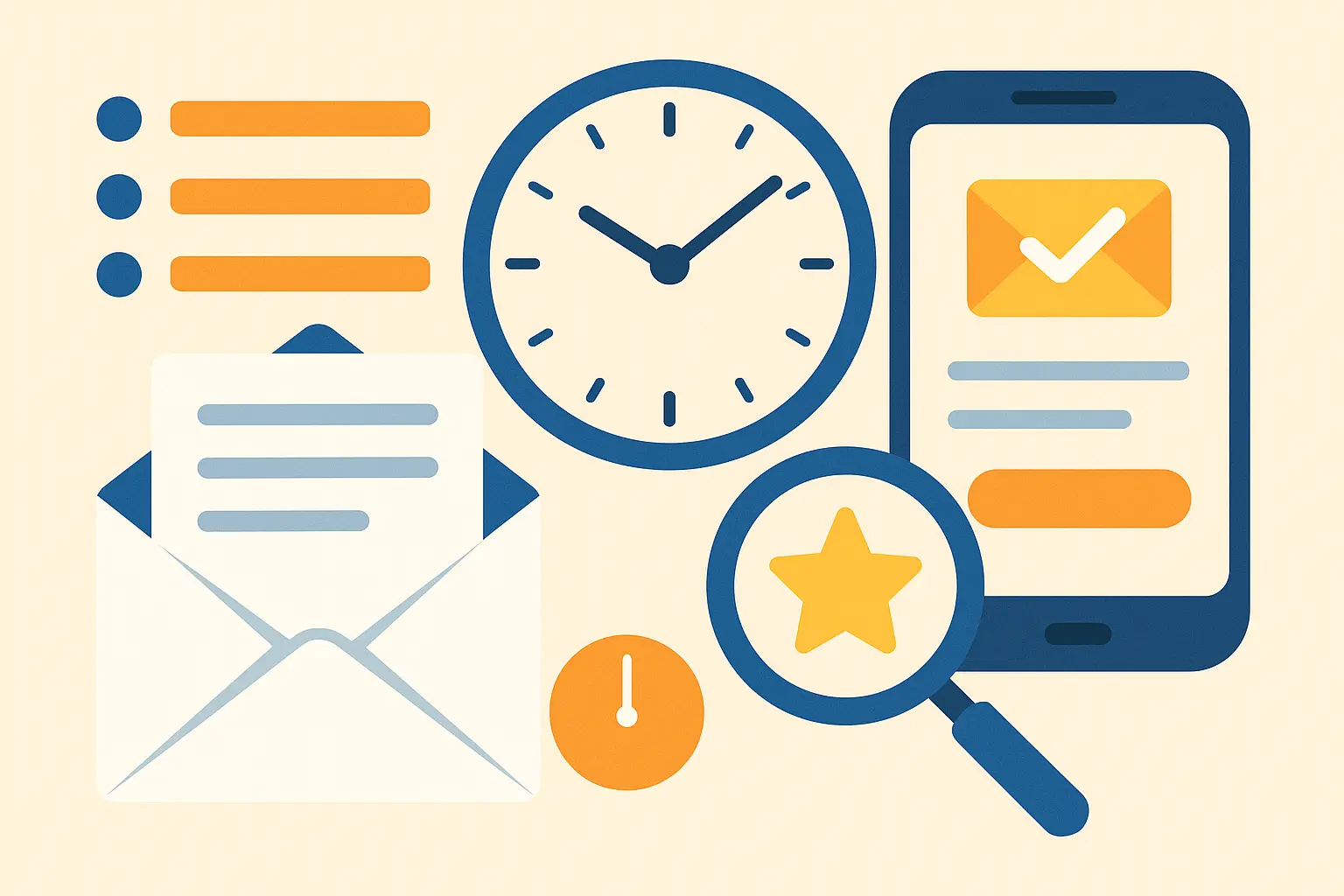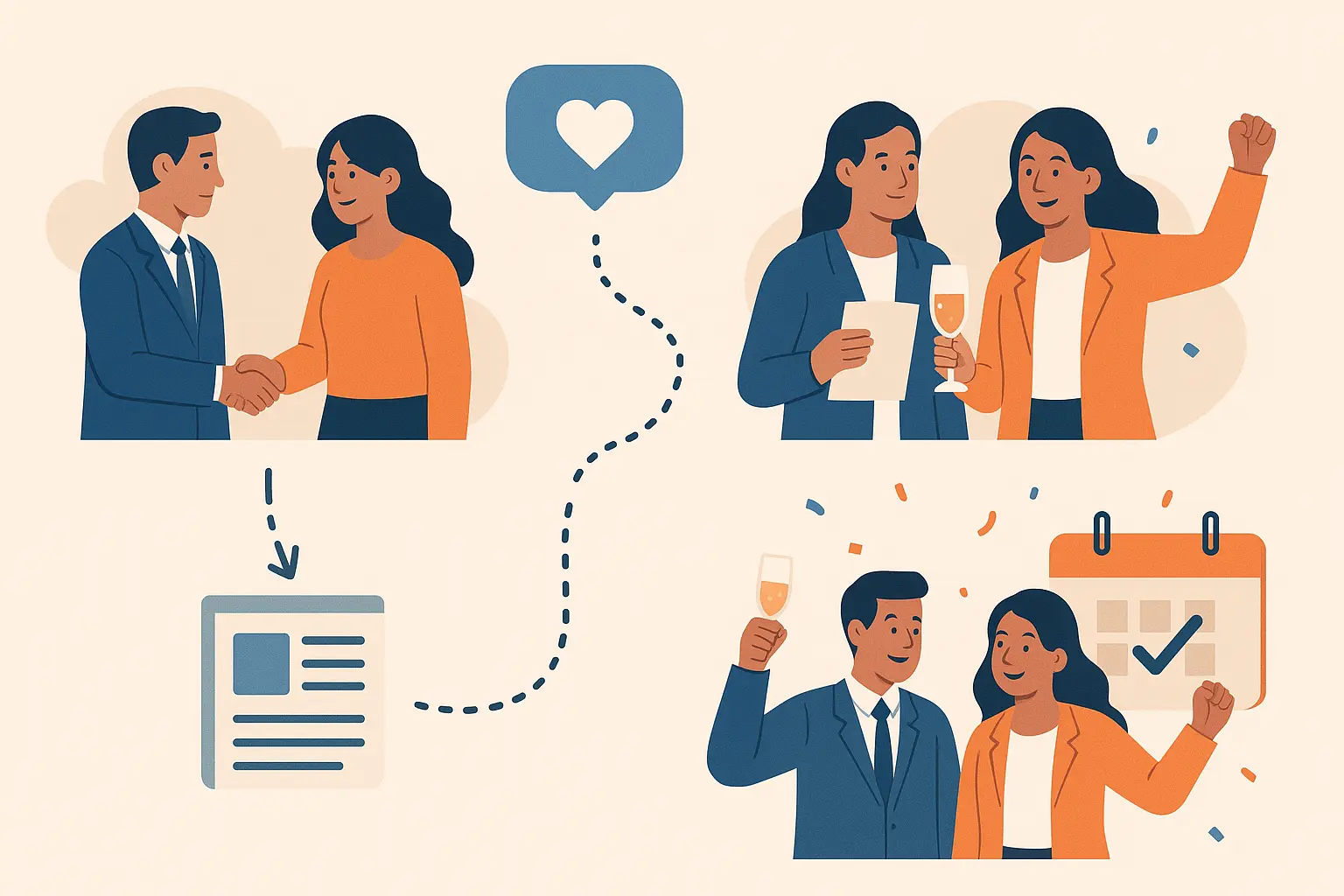How to Write a Letter of Interest That Actually Gets You Noticed (Before Jobs Are Even Posted)

Ever notice how some people seem to land great jobs that were never posted online? They’re not just lucky – they’re using letters of interest to get in front of hiring managers before the competition even knows a position exists.
Think about it: would you rather be one of 200 people applying to a job posting, or the only person having a conversation with the hiring manager three months before they even think about posting anything?
According to research from LinkedIn, approximately 70% of people in a global survey were hired at companies where they had a connection. Here’s what works when you want to be that person who gets hired before jobs are even posted.
Table of Contents
-
Understanding the Real Power Behind Letters of Interest
-
Building Your Story That Companies Actually Want to Hear
-
Mastering the Structure That Gets Your Letter Read
-
Advanced Strategies That Turn Letters Into Interviews
TL;DR
-
Letters of interest let you reach companies before they post jobs, giving you first-mover advantage
-
Look for company growth signals like funding news and expansion plans to time your outreach perfectly
-
Focus on showing you understand their industry and can solve problems they don’t know they have yet
-
Start with something that proves you know their business, not generic “I’m interested” language
-
Use email plus LinkedIn for maximum visibility – make them see your name multiple times
-
Follow up with something useful, not “just checking in” – relationship building takes time
Understanding the Real Power Behind Letters of Interest
Most job seekers wait for positions to be posted, then compete with hundreds of other applicants. Letters of interest flip this script entirely. They’re your ticket to the hidden job market where most positions get filled before they’re ever advertised.
This isn’t about blindly sending letters everywhere – it’s about smart, research-backed outreach that positions you as the solution to problems companies are just starting to recognize.
What Makes These Letters Your Secret Weapon
A letter of interest isn’t just another application document – it’s a relationship-building tool that works when there’s no job posting to respond to. Instead of competing in a crowded field, you’re starting conversations that could lead to positions being created specifically for you.
Unlike traditional job applications, a well-crafted letter of interest works similarly to writing a cover letter that gets noticed, but with the added advantage of reaching employers before they even know they need to hire.
Here’s the thing: when you reach out before positions are posted, you’re not competing against dozens of other candidates. You’re having a one-on-one conversation with decision-makers who might be thinking about expanding their team but haven’t pulled the trigger yet.
Companies often prefer to hire someone they’ve already been talking to rather than starting a lengthy recruitment process. Why would they want to sift through 200 applications when they already know someone who could do the job?
Smart professionals understand that relationships drive opportunities. Your letter of interest isn’t asking for a job that doesn’t exist – it’s introducing yourself as someone who understands their business and could add value when the time is right. These conversations often lead to informal mentoring relationships, industry insights, and being top-of-mind when positions do open up.
Timing Your Outreach Like a Pro
Here’s the thing about timing: companies drop hints everywhere about when they’re about to hire. Sarah figured this out when she saw CloudFlow announce their $50M funding round. Instead of waiting for job posts, she immediately reached out to their CTO talking about scaling infrastructure. Three weeks later? They called her about a role that didn’t even exist yet.
Look for the obvious stuff: funding announcements, new office leases, partnerships, even increased job posts in other departments. Tech companies hire after funding rounds, retail staffs up before holidays, consulting firms expand at fiscal year starts. It’s not rocket science – just pay attention.
When tech startup CloudFlow announced their Series B funding in TechCrunch, Sarah didn’t wait around. She referenced the funding news and explained how her DevOps experience could support their growth plans. Three weeks later, CloudFlow reached out about a senior engineering role that hadn’t been posted anywhere.
Growth signals come in many forms. Watch for press releases about market expansion, mentions of scaling operations in earnings calls, or leadership changes that suggest new strategic directions. These indicators suggest a company is in growth mode and might be receptive to conversations about additional talent.
Why This Isn’t Just Another Cover Letter
The biggest mistake people make is treating letters of interest as cover letters without job postings. These documents serve completely different purposes and require different approaches.
Recent research from the University of Cincinnati shows that “a cover letter can make your application 38% more likely to get noticed” – highlighting the power of personalized written communication in today’s competitive job market.
Cover letters are reactive documents that address specific job requirements. A letter of interest is exploratory communication that demonstrates market awareness. You’re not trying to check boxes from a job description – you’re showing that you understand their business well enough to identify where you could add value.
Would you rather be the person responding to a job posting along with 150 other candidates, or the person who’s already been having conversations with the hiring manager for three months?
Building Your Story That Companies Actually Want to Hear
Stop listing your resume in paragraph form. Nobody cares that you have “strong project management skills.” They care that you saved your last company $150K by finishing a software migration three weeks early with zero downtime.
The difference? One sounds like everyone else. The other makes them think, “Hmm, we’ve got a migration coming up…”
Discovering What Makes You Different (And Valuable)
Before you can sell your value to a company, you need to understand what makes you uniquely qualified to help them. This goes beyond your resume – it’s about identifying the specific combination of skills, experiences, and perspectives that you bring to the table.
Just as you would highlight your hard skills on your resume to demonstrate technical competency, your letter of interest should showcase the unique combination of abilities that sets you apart from other professionals.
Your unique selling points aren’t just your biggest accomplishments – they’re the intersection of your skills, experiences, and natural strengths that create something distinctive. Maybe you’re the marketing professional who also has a technical background, or the sales person who’s worked in both startups and enterprise companies. These combinations create unique value propositions that can’t be easily replicated.
Take someone with experience in both healthcare and technology. Instead of seeing these as separate career paths, position yourself as someone who can bridge the gap between clinical needs and technical solutions – a rare combination that makes you incredibly valuable to health tech companies.
Numbers tell stories that resonate with business leaders. Instead of saying you “improved processes,” specify that you “reduced processing time by 40%, saving the company $200K annually.” Quantifying your impact helps hiring managers visualize the potential return on investment of bringing you onto their team.
Instead of writing: “I have strong project management skills and experience leading teams.” Write: “I led a cross-functional team of 12 people to deliver a software migration project 3 weeks ahead of schedule, resulting in $150K in cost savings and zero downtime during the transition.”
Showing You Actually Understand Their World
Industry knowledge demonstration separates serious candidates from people who are just sending mass letters. When you can speak intelligently about the challenges facing their industry and position yourself as someone who’s been thinking about solutions, you immediately elevate the conversation.
According to research by Backlinko, personalized outreach messages received 32.7% more replies than those that weren’t personalized, demonstrating the significant impact of customization and industry knowledge on response rates.
Effective letters reference specific industry trends, regulatory changes, or market pressures that the company is likely dealing with. This shows you’re not just looking for any job – you’re genuinely interested in their sector and understand the context they’re operating in. Read industry publications, follow thought leaders, and understand the macro forces affecting their business.
Once you’ve identified industry challenges, connect your experience to potential solutions. If you know the industry is struggling with new regulations, highlight your compliance experience. If they’re dealing with digital transformation pressures, emphasize your change management skills. The key is making these connections explicit rather than assuming they’ll figure it out.
Future-forward thinking demonstrates strategic capability that executives value. Discuss emerging technologies, market shifts, or demographic changes that might impact their business in the next 2-3 years. This shows you’re not just focused on current challenges but thinking about where the industry is heading.
Making Sure Your Brand Fits Their Culture
Your letter of interest should reflect a personal brand that aligns with the company’s culture and values. This doesn’t mean changing who you are – it means presenting yourself in a way that resonates with their environment. A startup might appreciate a more casual, innovative tone, while a traditional corporation might prefer formal professionalism.
Authenticity matters more than perfection. Your tone should be professional but genuine, reflecting your personality while maintaining appropriate formality for the industry. If you’re naturally enthusiastic, let that come through. If you’re more analytical, lead with data and insights. The goal is to sound like the best professional version of yourself, not like everyone else.
Mastering the Structure That Gets Your Letter Read
Your first sentence either grabs them or gets deleted. Skip the “I’m writing to express my interest” garbage. Start with something that makes them think you actually know their business:
“After hearing your CEO talk about reducing carbon emissions by 50% at the Green Tech Summit, I kept thinking about how we solved a similar challenge at my last company…”
Even the most compelling content won’t matter if your letter isn’t structured for busy executives who scan rather than read. The format and organization can make the difference between getting a response and being ignored.
Opening Lines That Make People Keep Reading
Your opening paragraph has about 10 seconds to convince someone to keep reading. Generic introductions get deleted immediately. You need hooks that demonstrate immediate value and relevance to their business.
Starting with a relevant industry observation or trend immediately establishes credibility and shows market awareness. Reference a recent development in their sector, a challenge you know they’re facing, or an opportunity you’ve identified. This approach positions you as someone who thinks strategically about their business, not just someone looking for a job.
Mutual connections, recent company news, or events where you encountered the recipient create immediate relevance and credibility. Maybe you heard their CEO speak at a conference, or you have a mutual LinkedIn connection who suggested you reach out. These references provide context for your outreach and make it feel less like cold calling.
“After hearing your CEO’s presentation on sustainable manufacturing at the Green Tech Summit last month, I was impressed by your company’s commitment to reducing carbon emissions by 50% within three years. As someone who has helped two manufacturing companies achieve similar sustainability goals, I wanted to explore how my experience might support your initiatives.”
Organizing Your Core Message for Maximum Impact
The body of your letter needs to be scannable and compelling. Busy executives don’t read every word – they look for key information that tells them whether this person is worth their time. Structure your content around specific problems and solutions, using concrete examples that demonstrate your potential value.
Organize your content around challenges you know the company faces, then position your experience as the solution. This framework makes it easy for readers to understand your value proposition. Instead of listing random qualifications, you’re presenting a logical argument for why they should be interested in talking with you.
Each paragraph should focus on a specific achievement or skill set, providing context and demonstrating impact. Don’t just say you’re good at project management – tell the story of a complex project you led, the challenges you overcame, and the results you delivered. These concrete examples help readers visualize how you might contribute to their team.
Closing Strong With Clear Next Steps
Your closing paragraph should make it easy for recipients to respond while respecting their time and decision-making process. Vague endings don’t give people a clear path forward. Instead, suggest specific, low-commitment next steps that feel reasonable and valuable to both parties.
The best calls-to-action suggest informal, low-pressure interactions that provide value to the recipient. Instead of asking for a job interview, suggest a brief coffee conversation to discuss industry trends, or offer to share insights from your experience in similar companies. These approaches feel collaborative rather than transactional.
Establish appropriate timelines for follow-up communication while showing respect for their busy schedule. Tell them you’ll follow up in a week or two if you don’t hear back, but also give them permission to ignore your outreach if the timing isn’t right. This approach shows professionalism and emotional intelligence.
Advanced Strategies That Turn Letters Into Interviews
Don’t just send an email and pray. Connect on LinkedIn the same day. Comment thoughtfully on their posts. Make them see your name three times before they even open your letter.
But here’s the key: don’t be that person who comments “Great post!” on everything. Actually read their content and add something useful to the conversation.
Sending a great letter of interest is just the beginning. The real magic happens in your follow-up strategy and multi-channel approach.
Going Beyond Email for Maximum Visibility
Single-channel outreach rarely breaks through the noise of busy executives’ inboxes. A coordinated approach creates multiple touchpoints that increase your visibility and demonstrate genuine interest in the company. The key is making these efforts feel cohesive rather than random spam.
Career experts emphasize the importance of strategic follow-up, with “10 personalized, compelling cover letters likely to land you more interview invitations than 50 generic ones will” according to hiring manager insights from The Cut.
Your letter of interest should complement your other job search materials, working together with your ATS-friendly resume to create a cohesive professional brand across all touchpoints.
Coordinate your letter of interest with strategic LinkedIn activity to create multiple touchpoints with your target contact. Connect with them on LinkedIn around the same time you send your letter, engage thoughtfully with their content, and optimize your profile to reinforce the message in your letter. This integrated approach increases the chances they’ll remember you and respond.
People get responses to their letters simply because the recipient noticed them commenting intelligently on their LinkedIn posts. It’s about creating familiarity before they even open your email.
Email optimization goes beyond just writing good content – it includes attention-grabbing subject lines, optimal send times, and mobile-friendly formatting. Your subject line should be specific and intriguing without being clickbait. Send emails on Tuesday through Thursday between 10 AM and 2 PM for best open rates, and always test how your email looks on mobile devices.
Following Up Without Being That Person
Following up is weird and uncomfortable. Do it anyway.
Wait two weeks, then send something useful – maybe an article about their industry or congrats on a company milestone you saw in the news. Not “just checking in” (everyone hates that). Give them a reason to remember you exist.
If they don’t respond after three touches over two months, move on. They’re either not interested or drowning in work. Either way, pestering them won’t help.
Research shows that following up after sending your letter of interest can significantly increase your chances of getting a response, with career experts recommending a structured follow-up approach for maximum effectiveness.
Just as you might follow up after an interview to maintain momentum, following up on your letter of interest requires strategic timing and value-added communication.
Monitor response rates, engagement levels, and feedback patterns to continuously improve your approach. Keep detailed records of when you sent letters, who responded, what types of companies showed interest, and which opening lines generated the most engagement. This data helps you refine your strategy and focus on the most effective tactics.
Maintain a simple spreadsheet tracking every letter of interest you send, including company size, industry, contact level, response rate, and eventual outcomes. After six months, clear patterns emerge about what works in different situations.
The best letters of interest start conversations that continue over months or even years. Share relevant industry articles, congratulate contacts on company milestones, or offer insights when you see news about their organization. These touchpoints keep you visible and demonstrate genuine interest in their success, not just your own job search.
Let’s be honest: most letters of interest get ignored. That’s normal. If you get a 10% response rate, you’re doing great. The point isn’t to get everyone to respond – it’s to start conversations with the right people at the right time.
Some companies have policies against responding to unsolicited outreach. Some hiring managers are just too busy. Some people are jerks. None of that is about you or your letter.
How Resume Builder IQ Can Amplify Your Letter of Interest Strategy
While crafting compelling letters of interest requires strategy and skill, having the right tools can make the process much more effective. Resume Builder IQ’s AI-powered platform doesn’t just help you create outstanding resumes – it provides the foundation for your entire job search strategy, including letters of interest. The platform’s industry-specific insights and keyword optimization ensure your letters complement your resume perfectly, creating a cohesive personal brand that resonates with hiring managers across all touchpoints.
The integrated approach means you can easily customize your letters for different companies and roles, using the same strategic thinking that makes your resume ATS-friendly and human-readable. Ready to take your job search to the next level? Try Resume Builder IQ today and see how professional, coordinated job search materials can transform your outreach results.
When you understand what to put on your resume to make it compelling, you can apply those same principles to make your letter of interest equally impactful and targeted.
Final Thoughts
The best part about letters of interest? Even when they don’t lead to immediate jobs, they often lead to something better: relationships with people who might hire you later, refer you elsewhere, or just give you inside scoop on your industry.
Start with five companies you actually want to work for. Do your homework. Write like a human being. Follow up like a professional. See what happens.
Writing effective letters of interest isn’t about sending more emails – it’s about sending smarter ones. The professionals who succeed with this strategy understand that these letters are relationship-building tools, not just another way to ask for jobs. They research companies thoroughly, time their outreach strategically, and follow up systematically while adding genuine value to every interaction.
Remember that letters of interest work best as part of a comprehensive job search strategy. They’re not magic bullets that guarantee interviews, but they are powerful tools that can open doors to opportunities you’d never find through traditional job boards. The key is approaching them with the same professionalism and strategic thinking you’d bring to any important business communication.









